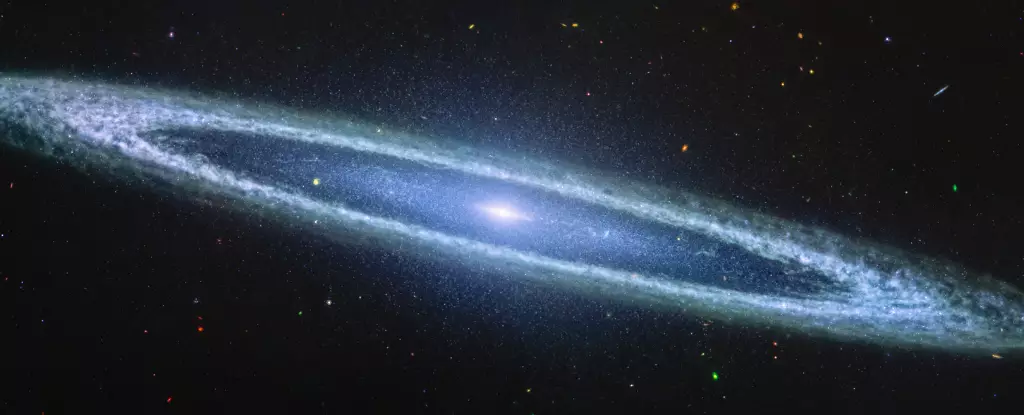NGC 4594, popularly referred to as the Sombrero Galaxy, has captivated astronomers since its discovery by Pierre Méchain in 1781. Its striking visual characteristics—most notably, a symmetric ring of dust encircling its halo—lend it an unusual and attractive appearance that has drawn the attention of both amateur stargazers and seasoned scientists. Recent explorations using the James Webb Space Telescope (JWST) have yielded remarkable new insights and challenged established notions about this enigmatic galaxy, suggesting that NGC 4594 may be far more complex than previously understood.
Until recently, much of the information gleaned about NGC 4594 came from the Hubble Space Telescope, which, despite its groundbreaking discoveries, operates within the optical spectrum. While Hubble’s images exhibit stunning clarity, they are inherently limited by the heavy dust ring that obscures the central regions of the galaxy. This optical limitation meant that many details, such as potential stellar nurseries and the structure around the active black hole at the galaxy’s core, remained elusive. One of the prevailing hypotheses was that the dusty perimeter was concealing regions where new stars were forming—a classic feature of many galaxies.
James Webb Space Telescope: A Game Changer
The advent of the JWST marks a significant advancement in our astronomical toolkit, particularly with its Mid-Infrared Instrument (MIRI). With capabilities that extend beyond the optical range, the JWST is able to penetrate galactic dust clouds, revealing hidden features and components. The latest images of the Sombrero Galaxy represent a watershed moment in our understanding of its composition and activity. Contrary to previous expectations, JWST’s observations showed clumps of warm molecular gas within the iconic dust ring but surprisingly revealed scant evidence of young star formation.
Another revelation from the JWST’s observations is the morphology of the central region of the galaxy. Instead of discovering a dense cluster of stars typically found around an active black hole, observations indicate a comparatively flat disk structure in NGC 4594. This finding is notably unexpected, as it deviates from what is typically observed in other galaxies of similar nature. The central black hole, while active, exhibits low luminosity, producing jets of plasma yet lacking the vibrant brilliance associated with more active galactic nuclei.
Implications for Star Formation
The implications of these findings are profound. The Sombrero Galaxy, despite its prominent dust ring, does not serve as a hub for robust star formation as previously thought. This challenges existing models of galactic evolution and raises critical questions about the processes governing star birth in such environments. With only a few young stars identified, it appears that the galaxy’s dust ring may have a different role than assumed, perhaps acting more as an aesthetic feature than a dynamic stellar nursery.
As the JWST continues its observations, astronomers are set to delve deeper into understanding the 2,000 globular clusters that pepper the Sombrero Galaxy—a number that seems unusually high given the galaxy’s size. Investigating these clusters may provide valuable insights into the galaxy’s formation history and its unusual characteristics compared to similar galaxies. The ongoing analysis of these images invites further research, encouraging scientists to rethink our cosmic framework and how we interpret the behavior and life cycles of galaxies.
The unveiling of the Sombrero Galaxy through the lens of the JWST is just the beginning. As we continue to refine our understanding of NGC 4594, we may find ourselves redefining our approach to the study of galaxies in general, forever changing our cosmic narrative. The importance of adapting to new evidence cannot be overstated, and as we gaze into the depths of space, we are reminded of the endless mysteries awaiting our exploration.


Leave a Reply